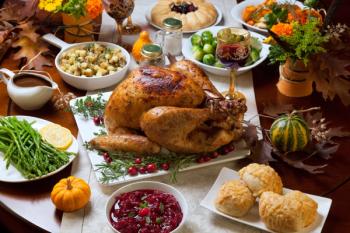
Physiotherapy during labor reduces c-section and birth injury
A new study presented at the 2025 ACOG Annual Clinical & Scientific Meeting reveals that physiotherapy support during labor lowers the chances of cesarean delivery, severe perineal tears, and labor pain.
Cesarean birth and severe perineal laceration risks are significantly reduced by physiotherapy assistance during labor, according to a recent study presented at the 2025 American College of Obstetrics & Gynecology Annual Clinical & Scientific Meeting in Minneapolis, Minnesota, from May 16 to May 18, 2025.
New legislation supports physiotherapist presence
New legislation has made physiotherapist presence in maternity hospitals mandatory, highlighting the role these specialists play in managing pain during labor. Labor outcomes may be improved by physiotherapists through kinesiotherapy, thermotherapy, electrotherapy, and other specialized techniques.
Alongside employing these techniques, physiotherapists may provide vital nonpharmacological support during childbirth. Therefore, investigators conducted a study highlighting the impact of physiotherapy assistance during labor.
Evaluating the impact of physiotherapy
Randomized and quasi-randomized trials were identified through searches of multiple databases. These studies compared outcomes of physical therapy assistance during labor to those of standard care. Investigators determined the certainty of evidence with the Cochrane tool (RoB 2.0) and the GRADE system, then performed meta-analyses.
There were 984 pregnant patients across 12 studies included in the final analysis. Among those receiving physiotherapy, a relative risk (RR) of 1.10 was reported for vaginal deliveries compared to those receiving standard care, with a 95% confidence interval (CI) of 1.04 to 1.17.
These patients also reported a reduced prevalence of cesarean sections, with an RR of 0.52 and 95% CI of 0.35 to 0.76. For perineal lacerations, the RR was 0.45 and the 95% CI was 0.25 to 1.07, highlighting a decreased risk.
Reduced labor and pain
The first and second stages of labor were also shortened in the physiotherapy group vs the standard care group, with mean differences of -99.01 minutes and -11.29 minutes, respectively. Moderate certainty was reported for this evidence.
Overall, a reduction of 1.46 points on the Visual Analog Scale was reported for pain in the physiotherapy group. For maternal anxiety, this reduction was -7.65 points. These declines were supported by low-certainty evidence, and no other significant differences were reported in other maternal and fetal outcomes.
These results indicated increased odds of vaginal delivery and reduced risks of cesarean birth and perineal lacerations from physiotherapy assistance during labor. Additionally, physiotherapy assistance was associated with reduced labor duration, pain intensity, maternal anxiety, and pharmacological analgesia use.
Multimodal physical therapy benefits
Physical therapy has also been linked to health benefits in women with chronic pelvic pain, based on data evaluated from 41 studies.2 The trials, most of which were randomized controlled trials, highlighted reduced pain among women aged a mean 35.1 ± 8.6 years.
In patients receiving multimodal physical therapy, a standardized mean difference (SMD) of -1.69 was reported for pain intensity compared to controls, highlighting a decline. When retransforming the SMD to a normal 0 to 10 pain scale, the mean difference was -2.87, highlighting a significant effect with high certainty of evidence.
Efficacy remained at 12 to 36 weeks posttreatment, with an SMD of -1.82. On the 0 to 10 pain scale, the mean difference was -3.09. As efficacy was not shown for other conservative therapies, this highlighted multimodal physical therapy as the only conservative method with proven efficacy.
References:
- Delgado AM, Marinho GA, Lemos A, Amorim MMR. Physical therapy assistance in labor: a systematic review and meta-analysis. Presented at: 2025 ACOG Annual Clinical & Scientific Meeting. Minneapolis, MN. May 16-18, 2025.
- Krewson C. Multimodal physical therapy proves effective for women with chronic pelvic pain. Contemporary OB/GYN. January 6, 2025. Accessed May 13, 2025. https://www.contemporaryobgyn.net/view/multimodal-physical-therapy-proves-effective-for-women-with-chronic-pelvic-pain
Newsletter
Get the latest clinical updates, case studies, and expert commentary in obstetric and gynecologic care. Sign up now to stay informed.











